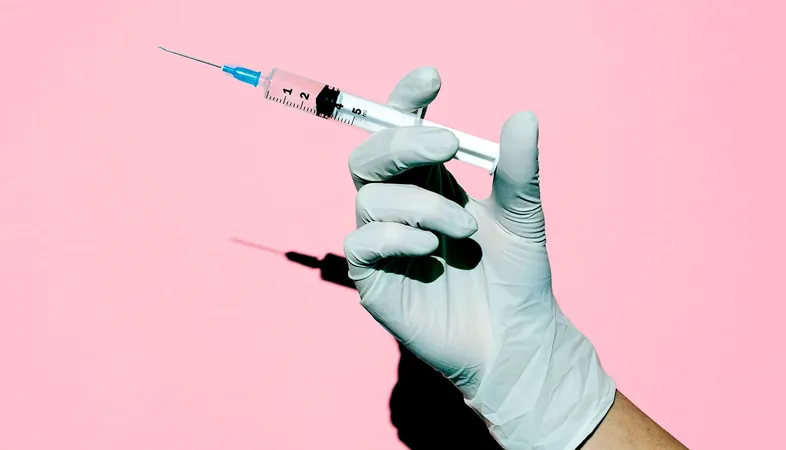
Game-Changer: A Single Shot at Birth Could Shield Kids from HIV for Years!
2025-08-22
Author: Rajesh
Revolutionary Gene Therapy Offers New Hope Against Pediatric HIV
Imagine a world where a single injection at birth could protect children from HIV for years. A groundbreaking new study suggests that delivering gene therapy right as a baby is born may provide long-lasting immunity against this deadly virus.
Timing is Everything: Why the First Month Matters
This innovative approach leverages the early days of life, a critical period when a newborn's immune system is more receptive. Researchers are excited to reveal that this window is ideal for administering gene therapies that would be rejected later in life.
Dr. Amir Ardeshir, an associate professor at the Tulane National Primate Research Center and lead author of the study, highlights the urgent need for such advancements: “Nearly 300 children are infected with HIV each day.” He asserts that this new therapy could be a game changer for infants in high-risk regions.
Promising Results with Non-Human Primates
In the study, scientists administered a gene therapy to nonhuman primates that instructs cells to continuously produce HIV-fighting antibodies. Remarkably, those treated within their first month of life enjoyed protection from infection for a staggering three years, all without requiring booster shots.
Conversely, primates treated later, at 8-12 weeks, had a more developed immune response which interfered with the treatment. "This is a one-and-done treatment that aligns with when mothers with HIV are most likely to seek medical help," explains Ardeshir.
Tackling Mother-to-Child Transmission
Each year, over 100,000 children become HIV-positive, primarily through mother-to-child transmission. Although antiretroviral therapies have made strides in suppressing the virus, access to treatment remains a dramatic challenge, especially in resource-limited settings.
The innovative therapy utilizes adeno-associated virus (AAV)—a benign virus that acts like a delivery truck for genetic material—to instruct muscle cells to produce broadly neutralizing antibodies (bNAbs). This novel method transforms muscle cells into production factories for these powerful antibodies, sidestepping logistical issues of repeated infusions.
Broad Applications: From HIV to Malaria?
The results are already promising, with newborns showing increased tolerance to the gene therapy and generating high levels of bNAbs that successfully fend off HIV. The research may also pave the way for applications against other diseases, like malaria, that predominantly affect young children in poorer regions.
Despite this effective approach, researchers remain cautious. Questions linger about how these results will translate to human infants, who may not respond the same way to AAV treatments.
A Bright Future Ahead
If successful, this single-shot treatment could dramatically reduce the rates of mother-to-child HIV transmission, particularly in areas like sub-Saharan Africa, where 90% of pediatric HIV cases are concentrated. Dr. Ardeshir emphasizes, "Nothing like this was achievable just a decade ago. We now hold all the keys to combat HIV!"
Stay tuned: This research promises to reshape the landscape of pediatric HIV treatment, and its findings are set to appear in the prestigious journal, Nature.


 Brasil (PT)
Brasil (PT)
 Canada (EN)
Canada (EN)
 Chile (ES)
Chile (ES)
 Česko (CS)
Česko (CS)
 대한민국 (KO)
대한민국 (KO)
 España (ES)
España (ES)
 France (FR)
France (FR)
 Hong Kong (EN)
Hong Kong (EN)
 Italia (IT)
Italia (IT)
 日本 (JA)
日本 (JA)
 Magyarország (HU)
Magyarország (HU)
 Norge (NO)
Norge (NO)
 Polska (PL)
Polska (PL)
 Schweiz (DE)
Schweiz (DE)
 Singapore (EN)
Singapore (EN)
 Sverige (SV)
Sverige (SV)
 Suomi (FI)
Suomi (FI)
 Türkiye (TR)
Türkiye (TR)
 الإمارات العربية المتحدة (AR)
الإمارات العربية المتحدة (AR)